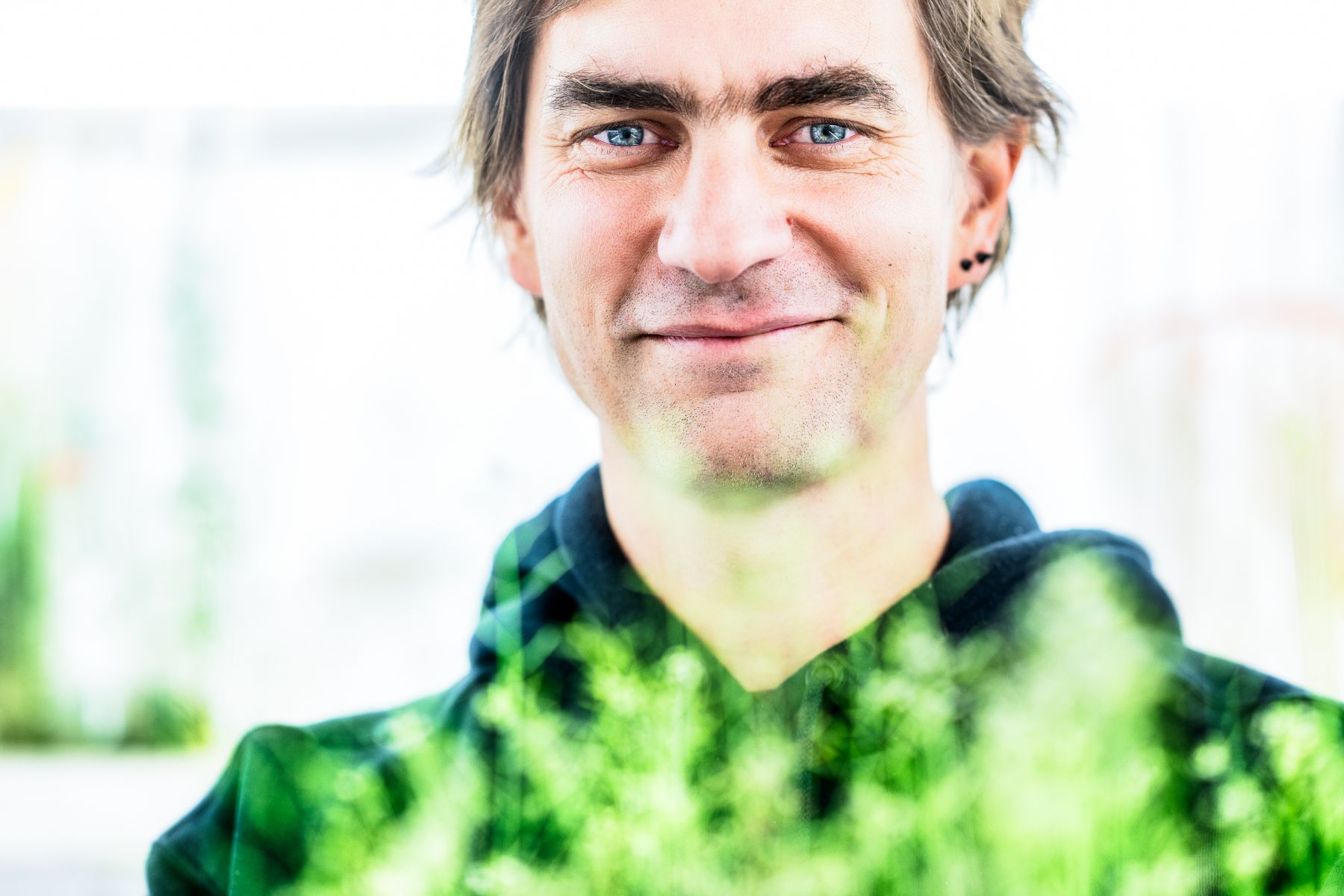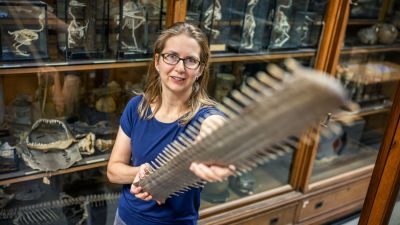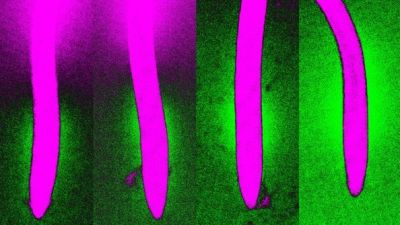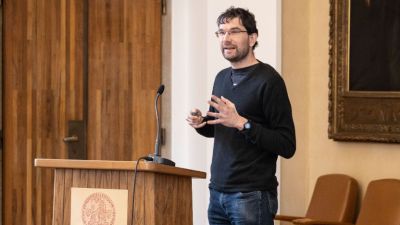"We have previously described rapid auxin speciation in the root of a model plant Arabidopsis thaliana. Now we want to focus on this pathway in other parts of plants and other species, such as grasses that are closely related to cereals, which brings us closer to possible practical applications," says Matyáš Fendrych from the Faculty of Science of the Charles University.
"Auxin is a phenomenon of plant biology – it plays an absolutely central role in regulating plant growth and without auxin there would be no plants as we know them today," says plant biologist Matyáš Fendrych from the Faculty of Science, Charles University. He has recently succeeded in elucidating the so-called rapid auxin response in the root of the model plant Arabidopsis thaliana, which serves, among other things, to enable plants to grow quickly through the soil and orient themselves well.
"We now want to find out whether this response is a 'specialty' that has evolved in the roots of this plant or whether it is a more general process that also takes place in other parts of the plant and in other species such as grasses," says Matyáš Fendrych, who has now been awarded a prestigious Consolidator grant from the European Research Council (ERC) to carry out this project. This is his second ERC grant, having been successful in the Starting category in 2018. His "classmate from the university" Zuzana Musilova, who is investigating how deep-sea fish see, also succeeded in the current ERC call – more in a separate article.
"The fast auxin pathway is a hot trend in plant biology at the moment – other teams in Austria, America, the Netherlands or France are also researching it, but they are all focusing on the Arabidopsis root. We want to focus on plants more generally because we think it is a much more universal phenomenon," says the leader of the new MORpH project, who also reveals the second part of the research question.
"We also want to focus on how plants affect the shape of their cells – morphogenesis – through acidification of cell walls, or changes in pH, and how much this is related to auxin," says Fendrych, adding that although this is basic research, addition of the grass model, from which many crops such as grain are derived, also brings them closer to the possible use of the findings in practice.
The main challenges? Microscopy and people
What would Matyáš Fendrych like to be known for in five years, at the end of the project? "I would like us to do the best microscopy and be able to observe cellular processes in detail at high temporal and spatial resolution, not only in the roots of the Arabidopsis, which we do and is relatively easy, but also in other developing organs and other plants – that will be a challenge, " says the scientist, whose team has a special vertical microscope combined with spinning disk technology, which allows them to observe plant growth in its natural, i.e. vertical, position, and also "live" because the spinning disk allows for very fast scanning.
"But perhaps an even bigger challenge will be to find the best people and lure them to Prague to join the project," Fendrych says, stressing that people are his priority now and he wants to help young scientists grow and reach their full potential.

The illustrative image of the root tip of a plant Arabidopsis thaliana.
The presentation in front of the children also helped in the preparation
“I prepared long and intensively. In general, I was very nervous about it for a long time because I was aware that the future fate of my lab depended on it – what projects we will be able to work on, whether I will be able to hire new people and so on,” says Matyáš Fendrych, for whom this was his second ERC experience. How was it different? “I didn't have to go to Brussels for the interview, but it was all done online via videoconference, which has advantages, but it was also a source of additional stress to make everything work,” says Fendrych, who practiced the presentation in front of his colleagues at the faculty, but also during the preparatory “mock interview” organised by Zdeněk Strakoš. “They 'harshly criticised' my presentation there, but thanks to their feedback, I redid the whole thing and I think it helped a lot,” says the successful applicant, who also benefited from practicing his presentation in front of a non-traditional audience. “The night before the interview, I gave my presentation to my young children, who don't speak proper English yet and couldn't understand it at all. However, they were intrigued by the pictures of growing roots in the presentation and shouted 'hey pee-pee' with laughter, but I didn't let them get discouraged and continued with the presentation, reassuring myself that tomorrow would be easier. And it was!” Fendrych has the following advice for anyone who wants to apply “Try it! ERC grants give amazing freedom and, curiously, results in a higher success rate than many other grants.”
| Matyáš Fendrych, Ph.D. |
| Matyáš Fendrych studied biology at the Faculty of Science of Charles University and now owns a research group there. He received his PhD from Professor Viktor Žárský at the Institute of Experimental Botany of the Czech Academy of Sciences. He worked as a postdoctoral fellow in the laboratory of Moritz Nowack at the VIB Institute in Ghent, Belgium, and with the Czech experimental botanist Jiří Friml at the IST in Austria. |



















